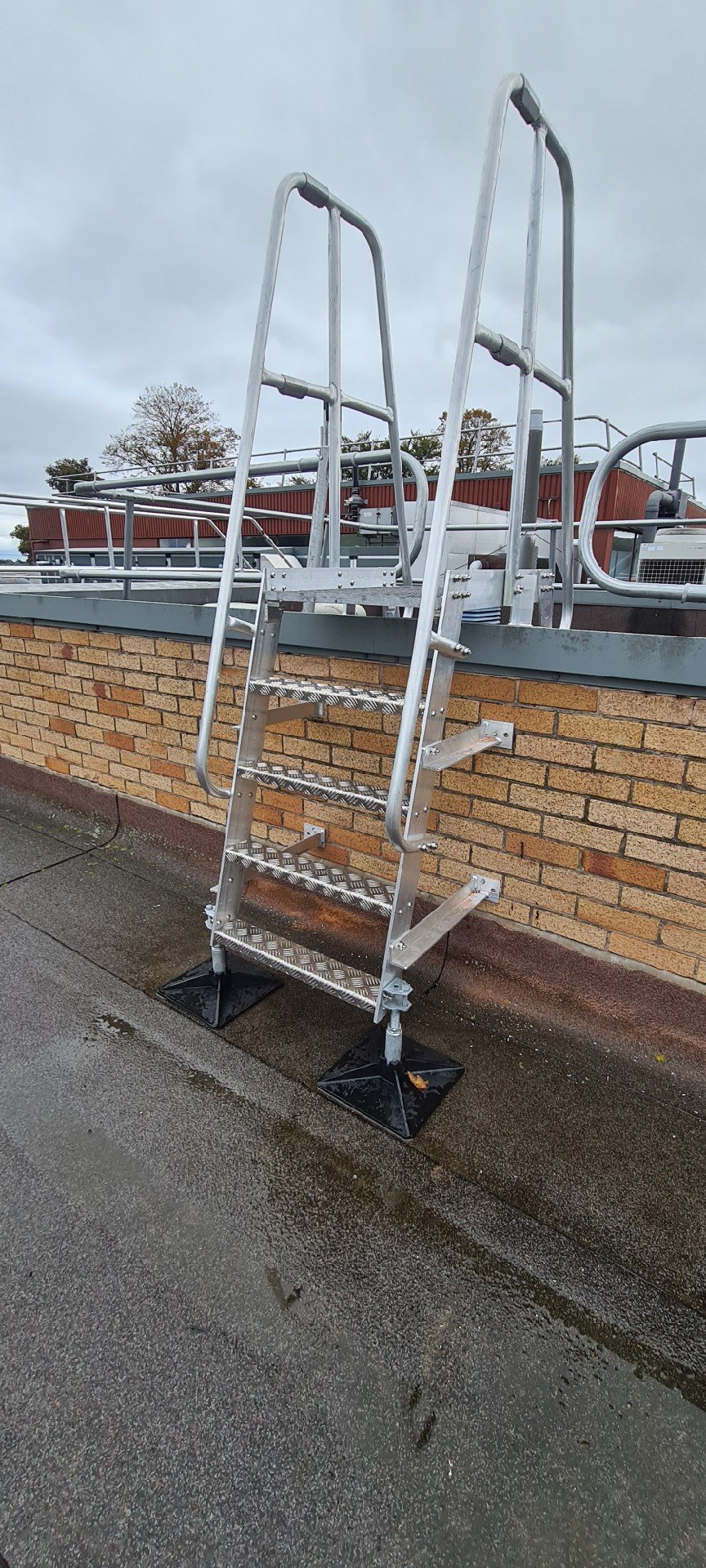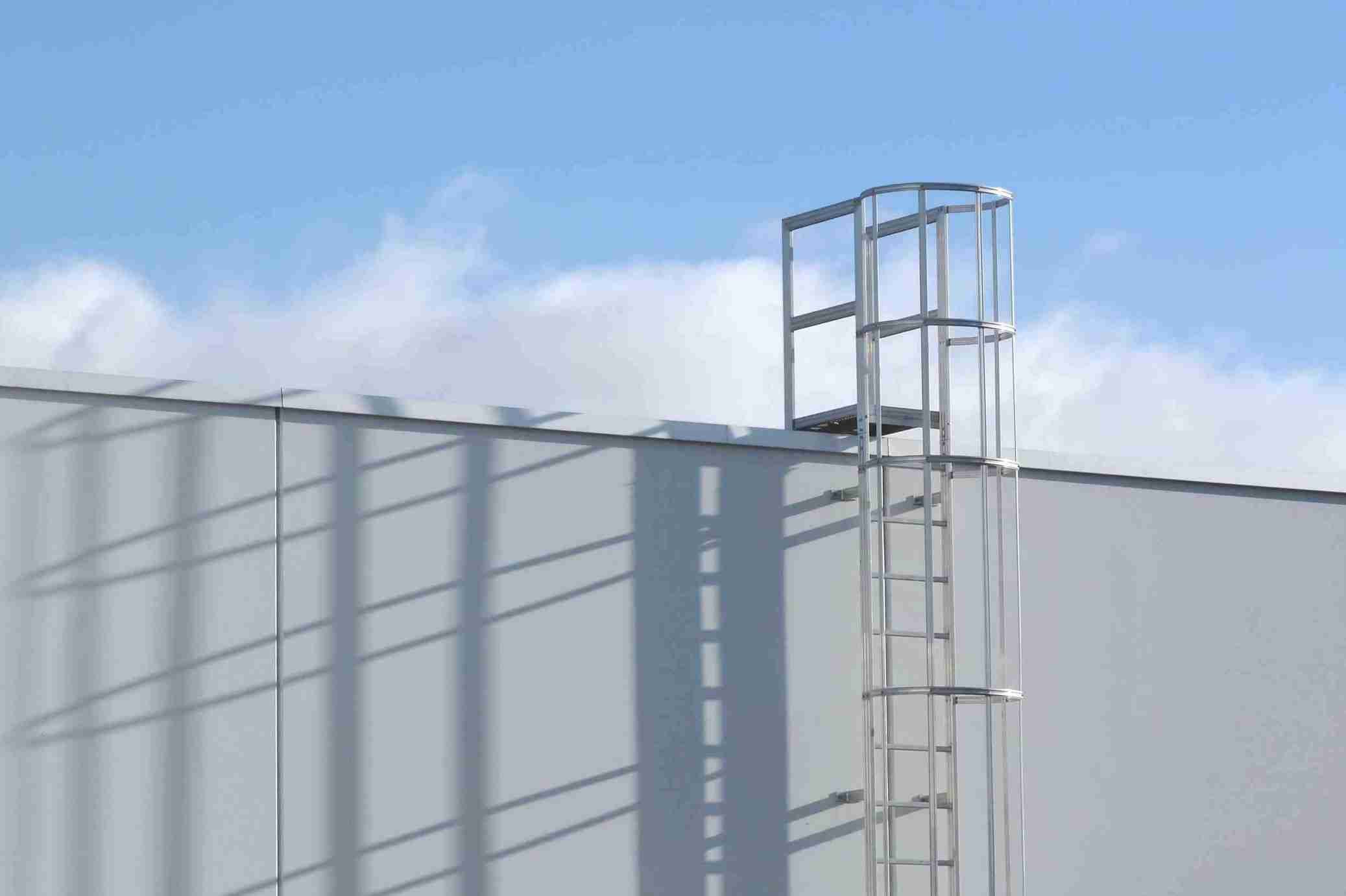
Companionway Ladders
Companionway Ladders
from Altus Safety
Companionway ladders, also commonly referred to as ship ladders, provide fixed secure access to heights under 3m - over 3m they require a platform. Companionway ladders are known to be safer to use when carrying equipment than a vertical ladder thanks to their slope inclined design.
The design provides more stability, while still maintaining the flexibility to suit most internal and external locations. Ship ladders or companionway ladders are often a preferred choice when a ladder is frequently used within a work environment.
Companionway ladders, as well as any fall arrest system used for Work at Height must be inspected and compliance tested once every 12 months. We guarantee that our Companionway ladder services conform to the standards set by BS 4211:2005 & BS EN ISO 14122-4:2016.
The Key Benefits of Using Companionway Ladders
Durable anti slip treads and handrail offer a stable, secure form of access
Available freestanding or as a permanent fixture
Lightweight & durable
Companionway ladder systems can be integrated into guardrail systems
Companionway Ladders are quick & easy to install
16 Questions when choosing a Fall Protection Company
-
Companionway ladders are angled between 60 to 75 degrees and the ladders are often used when space is minimum and insufficient for a staircase.
The ladders can be integrated into guardrail edge protection to form part of a planned comprehensive access strategy. We equip these systems with a single line of a handrail on each side, to provide extra safe hold.
Our companionway ladders or ship ladders are lightweight and are available for freestanding or as a permanent fixture. This ladder system provides simple access to roof areas or raised floors such as mezzanines. -
Companionway ladders are known to be safer to use than a vertical ladder thanks to their slope inclined design. The design provides more stability, while still maintaining the flexibility to suit most internal and external locations.
Ship ladders or companionway ladders are often a preferred choice when a ladder is frequently used within a work environment.
-
The Work at Height regulations 2005 (WAHR 2005) require that whenever a roof or raised area that has to be accessed, this access must be undertaken in a safe and planned manner.
Companionway ladders comply with the following standards:
BS 5395: Part3. 1985
Testing/Inspection standards and frequency:
The Provision and Use of Work Equipment Regulations (P.U.W.E.R) 1998 – minimum of every 12 months by a working at height specialist company.
-
Companionway ladders are available in a range of materials and finishes, Please see below:
Materials:
Aluminium
GRP
Galvanised Steel
Stainless SteelFinishes:
Powder Coated to any RAL colour
-
These systems are commonly installed in the following sectors:
Residential
Industrial
Offices
Retail
Hotels
Leisure
Education
Healthcare
Utilities
Our Services
-

Height Safety Survey & Risk Assessment
-

Fall Arrest Design, Supply & Installation
-

Work at Height Inspection, Testing & Maintenance
-

Height Safety Training, Courses & Seminar








